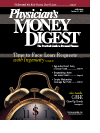Trace the Bull and Bear Market Origins
Considering the plethora of possibilities, a few well-known combinations in the world of animals are easily remembered. There are birds and bees, tortoises and hares, and, not to be overlooked, bulls and bears. These easily come to mind and are often utilized in our speech and writing. But a lingering question certainly begs, why and how did the bulls and bears become aligned with the stock market?
Animal Behavior
It may simply be that the "bear and bull market" terms were derived from unique animal behavioral characteristics. When attacking, bears stretch high onto their hind legs and then strike downward. During the winter months, bears hibernate and are completely unaware of events taking place, falling into a deep sleep. Bulls, on the other hand, appear to be in attack mode. Their heads are initially positioned in a low stance, tossing their horns upward as they move forward.
Investor's Business Daily
The mental imagery of these behavioral instincts may lead many to believe that the bull/bear market designations mimic these basic characteristics. Is this assumption correct? According to online, the true origin of the bear/bull terms dates back to the early 1700s.
Merriam-Webster New Book of Word Histories
The bear connection to a declining economic market originated in England and preceded the use of the term "bull" as related to market behavior. Yes, the bear came first. According to the (1991), "An English proverb that has been in use at least since the 17th century points out that it is not wise to sell the bearskin before one has caught the bear." Derived from this proverb, "to sell the bearskin" was a commonly used phrase during the early years of American bearskin trading. Over time, it was trimmed down to "bear."
South Sea Bubble
In 1720, England experienced a stock market scandal, coined the "South Sea Bubble" because the scandal affected the South Sea Company. The South Sea Company and many others had outlandishly high-priced stocks sold with the expectation that the prices would decline. Though the term "bear" was used prior to the South Sea Bubble, it became a widespread term describing this type of phenomenon.
Around the same time, the animal symbol of the bull came into the picture. The term "bull" was used to describe a philosophy of buying stocks with the expectation that prices would rise, not fall. In the 1700s, Alexander Pope wrote of the opposite mannerisms of bulls and bears, which continued to correlate this animal imagery.
As new stock markets were established in the United States, the normal "ups and downs" of these markets also were assigned the historical terminology "bulls" and "bears." This seemed to be the only logical combination of words to describe market vicissitudes. If the United States did not emulate the Europeans in using bull and bear designations to describe market occurrences, could we have used elephants and donkeys instead? If so, which market condition would you have assigned to each?
Genevieve Valentine has a strong background in ethical research and the investment industry. She works full-time for the Valentine Capital Asset Management of San Ramon, Calif, and is the chief editor of their "High Net-Worth Newsletter" published monthly. She currently is working on her master's degree in ethics. She welcomes questions or comments at 925-275-0200 or visit www.vcrpg.com.
